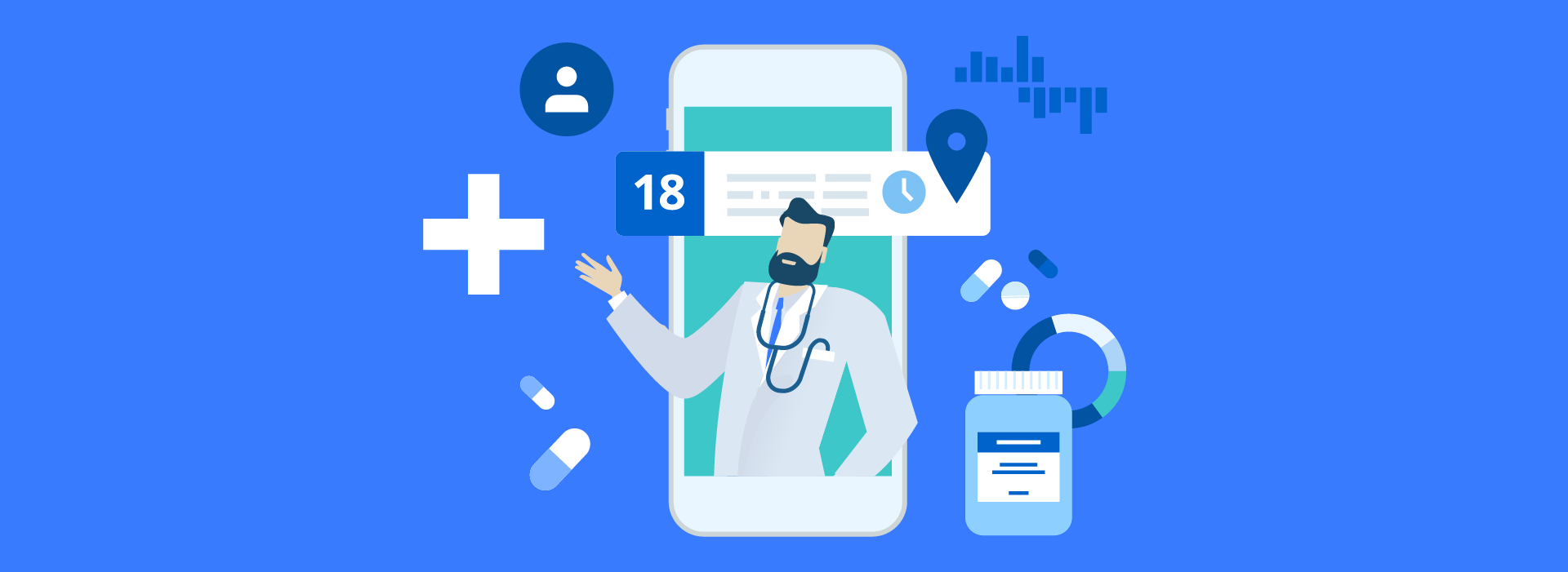Introduction
In the modern healthcare landscape, digital solutions have become indispensable tools for enhancing patient care, streamlining operations, and improving overall health outcomes. Flutter, an open-source UI software development kit created by Google, has emerged as a powerful framework for developing healthcare apps. With its ability to create high-performance applications for multiple platforms from a single codebase, Flutter is revolutionizing the way healthcare services are delivered. This article delves into how Flutter apps are transforming healthcare and highlights the pivotal role of healthcare app development companies in this transformation.
History of Healthcare Apps
The journey of healthcare apps began with basic applications that provided information and rudimentary services. Early examples include apps that offered medication reminders, basic fitness tracking, and health information. Over time, advancements in mobile technology, cloud computing, and data analytics have significantly enhanced the capabilities of healthcare apps. Today, these apps offer a wide range of functionalities, from telemedicine and remote patient monitoring to complex diagnostic tools and electronic health records (EHR) integration.
What is Flutter?
Flutter is an open-source UI toolkit developed by Google that allows developers to create natively compiled applications for mobile, web, and desktop from a single codebase. Launched in 2017, Flutter has quickly gained popularity due to its flexibility, performance, and the rich set of pre-designed widgets it offers. Key features of Flutter include hot reload, which allows developers to see changes in real-time, and its ability to deliver a smooth and responsive user experience across different platforms.
Advantages of Using Flutter for Healthcare Apps
Cross-Platform Compatibility
One of the primary advantages of Flutter is its cross-platform compatibility. Developers can write code once and deploy it across multiple platforms, including iOS, Android, web, and desktop. This reduces development time and costs, making it easier to reach a broader audience with a single application.
Faster Development Cycle
Flutter’s hot reload feature allows developers to see changes in real-time without restarting the application. This accelerates the development process, enabling faster iterations and more efficient debugging. For healthcare apps, which often require frequent updates and new features, this rapid development cycle is a significant benefit.
Cost-Effectiveness
By leveraging a single codebase for multiple platforms, Flutter reduces the resources and costs associated with app development. This cost-effectiveness is particularly beneficial for healthcare organizations looking to develop comprehensive digital solutions without incurring excessive expenses.
Performance and User Experience
Flutter combines the best of native development and web development, offering a high-performance user experience that feels smooth and responsive. The framework’s ability to directly interact with native components ensures that healthcare apps built with Flutter perform on par with fully native applications, providing users with a seamless and engaging experience.
Technical Specifications of Flutter
Flutter’s architecture is built around core components and libraries that facilitate seamless integration with native modules. The framework uses the Dart programming language and a reactive programming model, which helps create highly interactive user interfaces. State management in Flutter can be handled using tools like Provider, Riverpod, or Bloc, while navigation can be managed through libraries such as Flutter Navigator 2.0. These technical specifications make Flutter a powerful and flexible choice for healthcare app development.
Development Process of Flutter Healthcare Apps
The development process of a Flutter healthcare app involves several key stages:
Initial Planning and Research
Before development begins, it’s crucial to conduct thorough research and planning. This includes identifying the target audience, understanding user needs, and defining the core features and functionalities of the app. Competitive analysis and market research also play a vital role in shaping the app’s development strategy.
Design and User Experience
The design phase involves creating wireframes and prototypes to visualize the app’s layout and user flow. Emphasis is placed on creating an intuitive and visually appealing user interface that enhances user engagement. User experience (UX) design focuses on ensuring smooth navigation, easy access to features, and overall usability.
Development and Testing Phases
The development phase involves coding the app’s functionalities and integrating necessary features. Flutter’s component-based architecture allows for modular development, making it easier to manage and update the app. Rigorous testing is conducted throughout the development process to identify and resolve any bugs or performance issues. This includes unit testing, integration testing, and user acceptance testing to ensure a high-quality and reliable application.
Key Features of Successful Healthcare Apps
Successful healthcare apps are characterized by a set of core features that enhance patient care and engagement:
Appointment Scheduling and Reminders
Providing patients with the ability to schedule appointments and receive reminders helps reduce no-shows and improve adherence to medical schedules.
Telemedicine and Video Consultations
Telemedicine features enable patients to consult with healthcare providers remotely, improving access to care and reducing the need for in-person visits.
Electronic Health Records (EHR) Integration
Integrating EHR systems allows healthcare providers to access and update patient records in real-time, enhancing the quality and continuity of care.
Health Monitoring and Wearable Integration
Integrating with wearable devices and health monitoring tools allows patients to track vital signs and health metrics, providing valuable data for personalized care and early intervention.
Case Studies of Popular Healthcare Apps Built with Flutter
Several popular healthcare apps have leveraged Flutter to achieve success:
Example 1: Philips Hue
Philips Hue’s healthcare app, built with Flutter, provides patients with a comprehensive platform to monitor their health metrics, schedule appointments, and access telemedicine services. The app’s smooth performance and user-friendly interface demonstrate the advantages of using Flutter for healthcare app development.
Example 2: ePharma
ePharma’s app, also developed with Flutter, offers features such as medication reminders, prescription management, and real-time consultations with pharmacists. The app’s seamless integration with wearable devices and health monitoring tools highlights Flutter’s capabilities in creating robust healthcare solutions.
How Flutter Enhances Patient Engagement in Healthcare Apps
Flutter’s interactive features and real-time capabilities play a crucial role in enhancing patient engagement. Features like personalized health recommendations, real-time updates, and push notifications keep patients informed and motivated to manage their health. Additionally, Flutter’s ability to deliver a smooth and responsive user experience ensures that patients remain satisfied and loyal to the app.
Challenges in Developing Healthcare Apps with Flutter
Despite its many advantages, developing healthcare apps with Flutter presents certain challenges:
Ensuring Data Security and Privacy
Protecting patient data and ensuring secure transactions are paramount. Implementing strong security measures and adhering to best practices is essential to prevent data breaches and maintain user trust.
Compliance with Healthcare Regulations
Healthcare apps must comply with various regulations such as HIPAA (Health Insurance Portability and Accountability Act) in the US or GDPR (General Data Protection Regulation) in the EU. Ensuring compliance can be complex and requires careful planning and implementation.
Handling Large Data Volumes and Real-Time Updates
Healthcare apps often need to process and display large volumes of data, such as patient records and real-time health metrics. Efficiently handling and updating this data in real-time can be challenging.
Best Practices for Developing Healthcare Apps with Flutter
To overcome challenges and ensure the success of healthcare apps, developers should follow best practices:
Optimizing Performance
Performance optimization involves minimizing the app’s load time, ensuring smooth animations, and efficiently managing data updates. Techniques such as code splitting and lazy loading can help enhance performance.
Ensuring Smooth Navigation
A well-designed navigation system is crucial for user satisfaction. Implementing intuitive navigation patterns and ensuring smooth transitions between screens can significantly improve the user experience.
Implementing Effective State Management
Effective state management is essential for handling real-time data updates and ensuring consistent app behavior. Using libraries like Provider, Riverpod, or Bloc can help manage state efficiently and maintain a predictable app state.
Latest Innovations in Flutter for Healthcare Apps
The healthcare app industry continues to evolve, with new innovations enhancing the user experience:
Use of AI and Machine Learning
AI and machine learning are being integrated into healthcare apps to provide personalized recommendations, predictive analytics, and enhanced patient care. These technologies enable apps to offer tailored health insights and proactive interventions based on user behavior and health data.
Integration with IoT Devices
The integration of healthcare apps with IoT devices, such as smartwatches and fitness trackers, allows for continuous health monitoring and real-time data collection. This connectivity enhances patient care by providing healthcare providers with up-to-date health metrics.
Augmented Reality (AR) Features
AR features are being explored to create immersive healthcare experiences. For example, AR can be used for patient education, visualizing treatment plans, and providing virtual walkthroughs of medical procedures.
Future Prospects of Flutter in Healthcare App Development
The future of Flutter in healthcare app development looks promising, with several emerging trends:
Emerging Trends
Trends such as the integration of AI, AR, and IoT are expected to continue shaping the healthcare app industry. The focus will be on enhancing patient engagement, providing personalized care, and leveraging cutting-edge technologies to improve health outcomes.
Predictions for the Next Decade
Over the next decade, healthcare apps are likely to become even more sophisticated, offering advanced features such as real-time virtual consultations, seamless integration with electronic health records, and highly personalized health management tools. Flutter is well-positioned to play a significant role in this evolution, thanks to its flexibility and robust capabilities.
Comparative Analysis: Flutter vs Other Frameworks
Comparing Flutter with other frameworks helps highlight its strengths and weaknesses:
Flutter vs React Native
While both Flutter and React Native offer cross-platform development capabilities, Flutter’s use of the Dart programming language and its rich set of pre-designed widgets give it an edge in terms of performance and UI flexibility. However, React Native’s mature ecosystem and extensive community support are also significant advantages.
Flutter vs Swift/Objective-C
Swift and Objective-C are used for native iOS app development, offering high performance and seamless integration with iOS features. However, Flutter’s cross-platform capabilities and faster development cycle make it a more cost-effective and versatile choice for healthcare apps targeting both iOS and Android.
Flutter vs Kotlin/Java
Kotlin and Java are used for native Android app development. While they offer robust performance and access to Android-specific features, Flutter’s ability to create apps for both iOS and Android from a single codebase provides significant advantages in terms of development speed and cost.
User Guides and Tutorials for Flutter Healthcare Apps
For developers new to Flutter, step-by-step guides and tutorials can be invaluable:
Step-by-Step Development Guide
A comprehensive development guide should cover the entire process, from setting up the development environment to deploying the app. It should include practical examples, code snippets, and best practices for building a healthcare app with Flutter.
Tips for Optimizing User Experience
Optimizing user experience involves focusing on key aspects such as app performance, navigation, and design. Tips include using efficient state management, minimizing load times, and creating intuitive user interfaces.
Impact of Healthcare Apps on the Healthcare Industry
Healthcare apps have had a profound impact on the healthcare industry:
Changes in Patient Care
Healthcare apps have transformed how patients access care and manage their health. Features such as telemedicine, real-time health monitoring, and personalized recommendations have made it easier for patients to receive timely and effective care.
Influence on Healthcare Providers and Systems
Healthcare providers have also benefited from the use of healthcare apps. These apps facilitate better communication with patients, improve the efficiency of healthcare delivery, and enable data-driven decision-making. The integration of EHR systems and real-time health data has enhanced the quality and continuity of care.
Role of Healthcare App Development Companies
Healthcare app development companies play a crucial role in the successful creation and deployment of healthcare apps:
Importance in the Development Process
These companies bring expertise in Flutter development, ensuring that healthcare apps are built to the highest standards. Their experience and knowledge help navigate the complexities of app development, from initial planning to final deployment.
Leading Companies in the Industry
Several leading companies specialize in healthcare app development, including names like Topflight Apps, MindInventory, and Appinventiv. These companies have a proven track record of delivering high-quality applications and are trusted by many in the industry.
How to Choose a Healthcare App Development Company
Selecting the right development company involves several key considerations:
Key Considerations
Important factors to consider include the company’s experience with Flutter, their portfolio of past projects, client testimonials, and their approach to project management. It’s also essential to evaluate their technical expertise and ability to meet project deadlines.
Comparing Different Companies
Comparing companies based on their offerings, pricing, and overall reputation can help in making an informed decision. Conducting interviews and seeking detailed proposals can provide additional insights into their capabilities and suitability for the project.
Cost of Developing a Flutter Healthcare App
The cost of developing a Flutter healthcare app can vary widely based on several factors:
Breakdown of Development Costs
Development costs typically include expenses for research and planning, design, development, testing, and deployment. Additional costs may arise from ongoing maintenance, updates, and marketing efforts.
Factors Influencing the Cost
Factors such as the complexity of the app, the number of features, the level of customization, and the geographic location of the development team can significantly influence the overall cost. It’s important to plan and budget accordingly to ensure a successful project.
Marketing Strategies for Healthcare Apps
Effective marketing is essential for the success of healthcare apps:
Effective Marketing Techniques
Techniques such as social media marketing, influencer partnerships, content marketing, and email campaigns can help promote the app and attract users. Offering promotions and incentives can also drive downloads and user engagement.
Role of Social Media and Influencers
Leveraging social media platforms and collaborating with influencers can significantly boost the app’s visibility and reach. Engaging content, regular updates, and interactive posts can create buzz and attract a larger audience.
SEO for Healthcare Apps
SEO plays a critical role in the visibility and discoverability of healthcare apps:
Importance of SEO
Optimizing the app’s listing in app stores, using relevant keywords, and ensuring high-quality content can improve search engine rankings and attract more users.
Best Practices for App Optimization
Best practices include conducting keyword research, optimizing app titles and descriptions, encouraging positive reviews and ratings, and regularly updating the app to meet user expectations and improve performance.
User Experience and Interface Design in Healthcare Apps
A well-designed user interface and a positive user experience are crucial for the success of healthcare apps:
Importance of a User-Friendly Interface
A user-friendly interface ensures that users can easily navigate the app, access features, and find the information they need. A clean and intuitive design enhances user satisfaction and engagement.
Key Design Principles
Design principles such as simplicity, consistency, and responsiveness should be followed. Ensuring that the app’s design is visually appealing and easy to use can significantly improve the overall user experience.
Flutter Healthcare Apps During COVID-19
The COVID-19 pandemic has had a significant impact on healthcare apps:
Surge in Demand
With restrictions on in-person visits and increased demand for remote healthcare services, the use of healthcare apps surged during the pandemic. Patients relied on these apps for telemedicine consultations, health monitoring, and accessing health information.
Adaptations and Challenges
Healthcare apps had to adapt quickly to the changing landscape, incorporating features such as virtual consultations, COVID-19 symptom checkers, and real-time health updates. Navigating these challenges required flexibility and innovation.
Sustainability in Healthcare Apps
Sustainability is becoming an important consideration in the development and operation of healthcare apps:
Eco-Friendly Practices
Adopting eco-friendly practices, such as using energy-efficient servers, reducing data usage, and promoting digital health records, can contribute to sustainability efforts.
Reducing Carbon Footprint
Optimizing data delivery and minimizing resource consumption can help reduce the carbon footprint of healthcare apps. Encouraging users to adopt sustainable practices also plays a role in overall sustainability.
Consumer Privacy and Data Security in Healthcare Apps
Ensuring consumer privacy and data security is paramount for healthcare apps:
Importance of Data Protection
Protecting patient data is crucial to maintaining trust and compliance with regulations. Implementing robust security measures and adhering to best practices can prevent data breaches and protect user information.
Best Practices for Ensuring Security
Best practices include using encryption, secure data storage, regular security audits, and educating users about privacy and security. Following industry standards and guidelines ensures a high level of data protection.
Integration with Other Technologies
Integrating healthcare apps with other technologies can enhance their functionality and user experience:
Use of IoT
The Internet of Things (IoT) can enable seamless connectivity and real-time updates, enhancing the app’s capabilities. For example, IoT devices can provide real-time health data from wearables and medical devices.
AI and Machine Learning Integration
AI and machine learning can offer personalized health insights, predictive analytics, and enhanced patient care. These technologies enable healthcare apps to deliver tailored recommendations and proactive interventions based on user behavior and health data.
Role of Reviews and Ratings
Reviews and ratings play a significant role in the success of healthcare apps:
Impact on Consumer Choices
Positive reviews and high ratings can attract new users and build trust, while negative reviews can deter potential users. Managing reviews effectively is crucial for maintaining a positive reputation.
Strategies for Managing Reviews
Strategies include responding promptly to feedback, addressing issues, and encouraging satisfied users to leave positive reviews. Regularly monitoring and managing reviews helps maintain a positive app image.
Personalization in Healthcare Apps
Personalization is key to enhancing patient engagement and satisfaction:
Customizing the User Experience
Personalizing content, notifications, and recommendations based on user preferences and health data can significantly enhance the user experience. Tailored content makes the app more relevant and engaging for users.
Importance of Personalization
Personalization helps retain users and encourages them to actively manage their health. By offering a customized experience, healthcare apps can build stronger connections with their users and increase loyalty.
Conclusion
Flutter has revolutionized the development of healthcare apps, offering numerous advantages such as cross-platform compatibility, faster development cycles, and cost-effectiveness. By leveraging the capabilities of Flutter, a Flutter app development company can deliver high-performance, engaging, and personalized experiences to patients. As technology continues to evolve, the future of healthcare apps looks promising, with new innovations and trends shaping the industry. Embracing these changes and addressing challenges will ensure that healthcare apps remain a vital tool for improving patient care and health outcomes.





